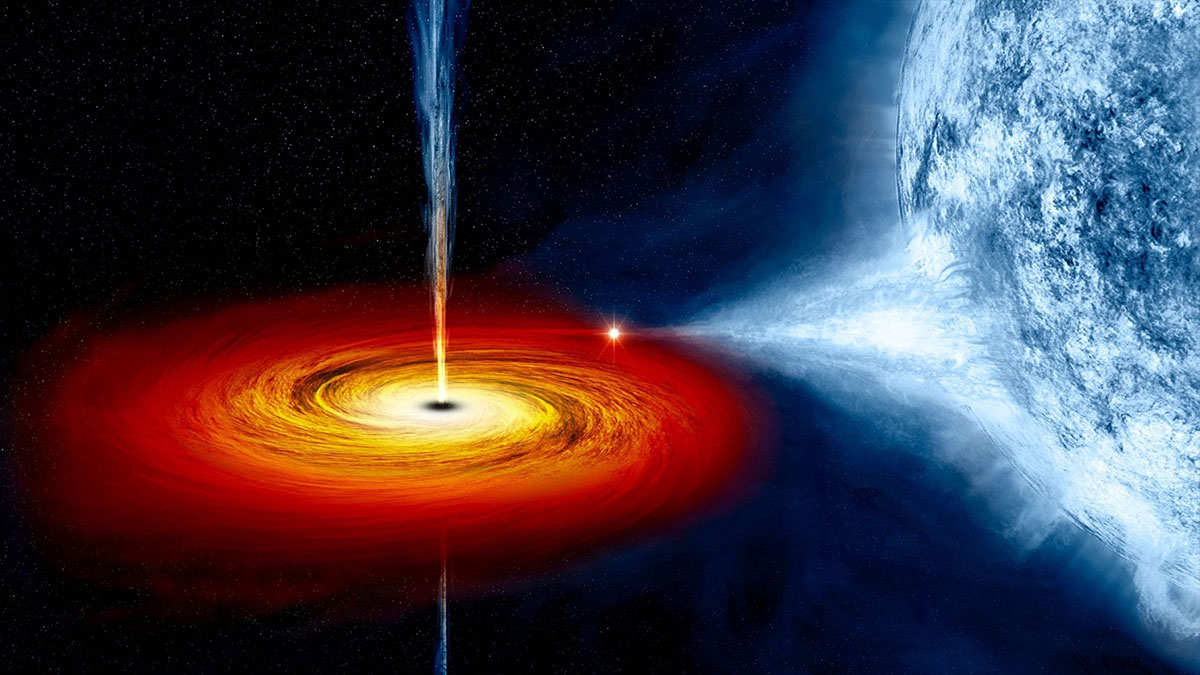the birth of a monster?

Everything is known by comparison. How else can you categorize a black hole with the mass of 500 suns as an intermediate object than to put it side by side with a multi-million solar mass monster? And here’s the big question astronomers are trying to answer. How do these black holes become so massive? When we find a mechanism for exponential black hole growth, we’ll have a better clue as to how galaxies are built and the life cycles of these enigmatic objects. It turns out that these 500 solar mass punctures in space and time may be the key to it all. As they roam through galaxies, collide and merge, they pack on more and more heft until they find themselves in the center of a galaxy, tipping the scales at up to 6.4 billion times the mass of the Sun.
After detecting one of these intermediate objects on the edge of a galaxy very poetically named ESO 243–49, about 290 million light years out, a team of English astronomers think they have part of the proof for the theory of black hole growth noted above. How? The largest stars we know off weigh in at just over 100 solar masses and in the process of becoming a black hole, a notable part of that mass is blown off into space. Clearly, to get to about five times that heft, this object must’ve been eating a whole lot of stars and merging with at least several other black holes in a complex and messy process that would emit a storm of gravitational waves. So if black holes can grow beyond the size of our heaviest stars, clearly they could migrate into a galactic center to eat and merge their way into a supermassive beast, right?
It sounds perfectly plausible, but we need to keep track of the numbers involved. Jumping from a few hundred to even a few million is no small feat. Here’s a little exercise to put that in perspective. You probably know what you’ll be doing in 500 seconds since that would only be 8.33 minutes. But what are your plans from the next 5 million seconds or about eight weeks from now? How about the next billion seconds which would be just a bit over 31 years? Now, when we go back and look at our intermediate object, that jump from being a black hole that seems way too large to belong in a stellar category to the really big leagues seems awfully challenging. How many billions of years would it take and what sorts of gigantic objects would it have to merge with to get to the supermassive class? And where would those objects come from?
This is why there’s still so much attention being given to the theory that vast clouds of gas surrounding baby galaxies could be the the real origin of these cosmic titans. As huge parts of them implode, they overcome all obstacles to compressing matter into oblivion and create enormous black holes that start feeding on anything within their grasp until the feedback from the process pushes the rest of the galaxy out of its reach. Or at least until another galaxy slams into it and already enormous black holes at the center of these stellar cities double if not triple or quadruple in mass. There are still mergers and lots of consumption involved but the numbers in question are now closer to our target. I’m not about to rule out the potential of these intermediate black holes to grow into supermassive objects at some point in their lives, but I would take a skeptical stance on the idea that they’re the answer to where the current crop of galactic scale monsters come from.





